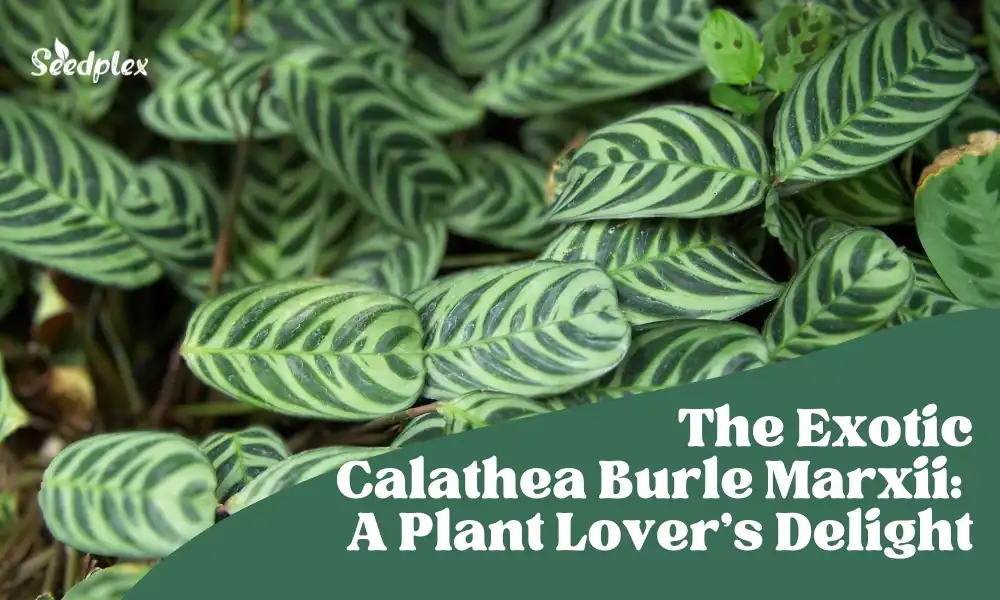Calathea Burle Marxii, often referred to as the “Goose Creek” or “Burle Marx Calathea,” is a stunning tropical plant native to Brazil. Renowned for its striking foliage and intricate patterns, this member of the Marantaceae family has become a beloved choice for indoor gardening and decor. Its unique beauty is matched by a set of care requirements that, when met, reward plant enthusiasts with a lush, vibrant addition to their collections. In this article, we will explore the plant’s history, characteristics, ideal growing conditions, care requirements, common problems.
Historical Context
Named after the celebrated Brazilian landscape architect Roberto Burle Marx, Calathea Burle Marxii reflects the influence of its namesake on tropical landscaping. Burle Marx was instrumental in integrating native Brazilian flora into landscape design, emphasizing the importance of biodiversity and the use of tropical plants in urban environments. This plant embodies his vision, showcasing the beauty and diversity of Brazil’s rich natural heritage.
Physical Characteristics
Foliage
Calathea Burle Marxii is characterized by its large, elliptical leaves that can grow up to 12 inches long and 4 inches wide. The leaves are a deep green adorned with bold, darker green stripes that run parallel along the length of the leaf, creating a striking visual effect. The underside of the leaves showcases a vivid purple hue, adding depth and contrast. This unique coloration serves a functional purpose as well, helping to attract pollinators in its native habitat.
Growth Habit
The plant typically reaches a height of about 2 to 3 feet, making it a substantial addition to any indoor space. Its growth habit is upright, with leaves emerging directly from the soil in a rosette formation. This structure allows it to thrive in low-light conditions, a trait that makes it especially appealing for indoor environments.
Ideal Growing Conditions
Light Requirements
Calathea Burle Marxii thrives in bright, indirect light. Direct sunlight can cause leaf burn, leading to brown edges and faded colors. An east-facing window is ideal, providing gentle morning light. If your space lacks natural light, consider using fluorescent or LED grow lights to ensure the plant receives adequate light without the risk of scorching its leaves.
Temperature and Humidity
This tropical plant flourishes in warm environments, preferring temperatures between 65°F and 80°F (18°C to 27°C). Sudden temperature fluctuations or drafts can stress the plant, so it’s essential to keep it in a stable environment.
Humidity is a critical factor for Calathea Burle Marxii, which thrives in high-humidity conditions (ideally above 50%). In drier climates or during winter months when indoor heating can lower humidity levels, consider using a humidifier, placing the plant on a pebble tray filled with water, or misting the leaves regularly.
Soil Requirements
A well-draining potting mix is crucial for the health of Calathea Burle Marxii. A blend of standard potting soil, peat moss, and perlite or orchid bark works well to ensure that the soil retains moisture without becoming waterlogged. Heavy soils can lead to root rot, so it’s essential to use a mix that provides adequate drainage.
Watering Guidelines
Calathea Burle Marxii prefers consistently moist soil but is sensitive to overwatering. It’s best to water the plant when the top inch of the soil feels dry. Be sure to water thoroughly until excess water drains from the bottom of the pot, and always discard any standing water. Using distilled or rainwater is recommended, as tap water often contains chemicals like chlorine or fluoride, which can harm the plant.
Fertilization
Feeding Schedule
During the growing season (spring and summer), Calathea Burle Marxii benefits from regular feeding with a balanced, water-soluble fertilizer. Dilute the fertilizer to half-strength and apply every four to six weeks to promote healthy growth. In the fall and winter, reduce or eliminate fertilization, as the plant enters a dormant phase.
Nutrient Needs
Ensure that the fertilizer contains essential micronutrients such as magnesium and iron, which are vital for the vibrant foliage of the Calathea. Over-fertilization can lead to leaf burn, so it’s crucial to follow a cautious approach when feeding.
Common Problems and Solutions
Pest Issues
While Calathea Burle Marxii is generally resilient, it can be susceptible to pests such as spider mites, aphids, and mealybugs. Regularly inspect the plant for any signs of infestation, such as discolored leaves or webbing. If pests are detected, treat them promptly with insecticidal soap or neem oil.
Leaf Browning and Curling
Browning or curling of the leaves is often a sign of stress. Common causes include low humidity, underwatering, or exposure to direct sunlight. To remedy this, increase humidity levels, adjust the watering schedule, and reposition the plant away from harsh sunlight.
Root Rot
Overwatering can lead to root rot, a serious condition that can threaten the plant’s survival. Symptoms include yellowing leaves and a foul odor from the soil. If root rot occurs, it’s essential to remove the plant from its pot, trim away any rotten roots, and repot it in fresh, well-draining soil.
FAQs
Q: How much light does the Calathea Burle Marxii need?
A: The Calathea Burle Marxii prefers bright, indirect light and should be kept away from direct sunlight, which can cause the leaves to burn.
Q: What temperature should the Calathea Burle Marxii be kept in?
A: The Calathea Burle Marxii should be kept in a warm, humid environment, with temperatures between 65 and 80 degrees Fahrenheit.
Q: How often should the Calathea Burle Marxii be watered?
A: The soil should be kept moist but not soggy, and the plant should be watered regularly.
Q: What type of water should be used to water the Calathea Burle Marxii?
A: The Calathea Burle Marxii is sensitive to fluoride, so it is important to use filtered or distilled water when watering the plant.







